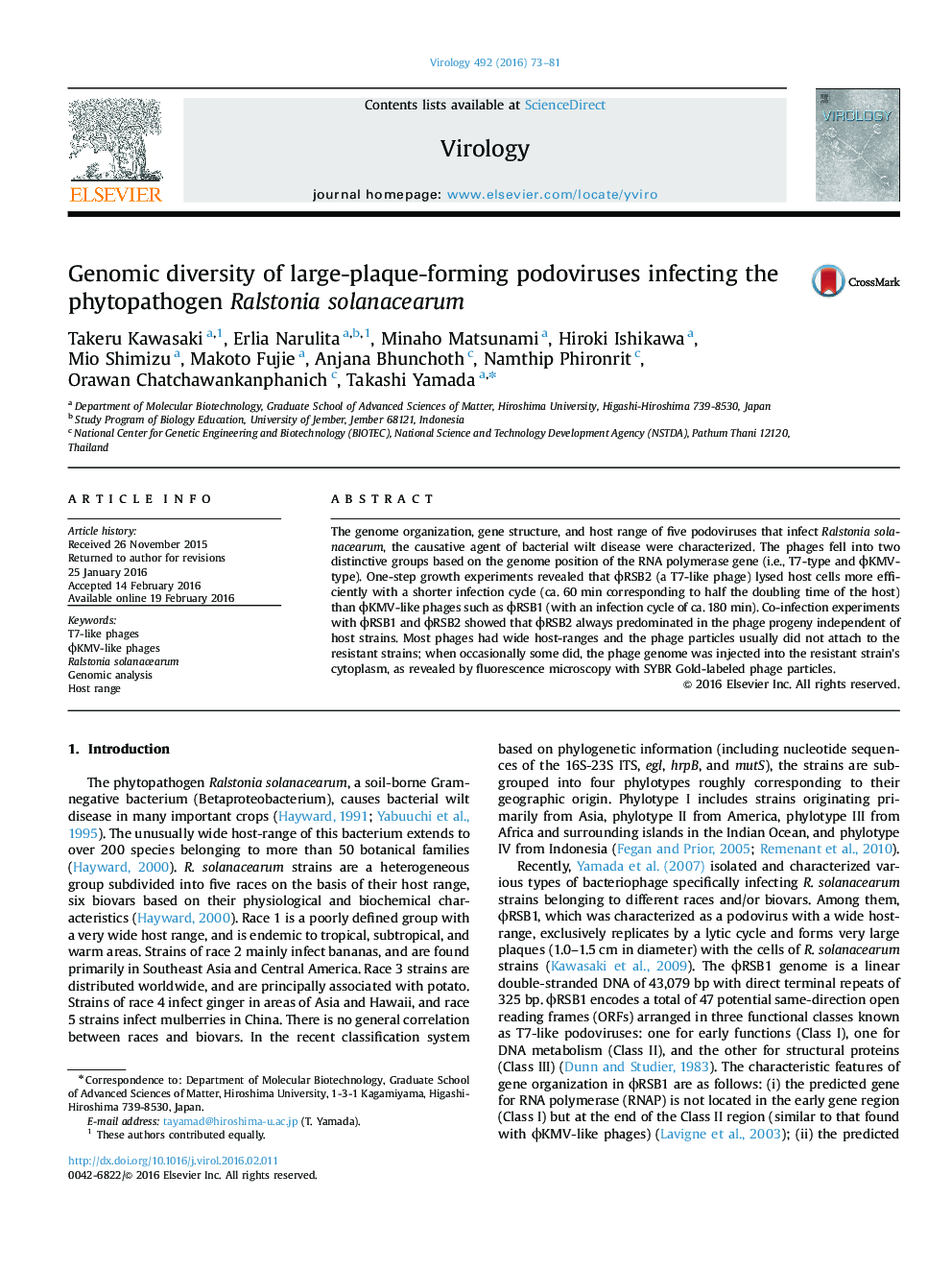| کد مقاله | کد نشریه | سال انتشار | مقاله انگلیسی | نسخه تمام متن |
|---|---|---|---|---|
| 6138762 | 1594225 | 2016 | 9 صفحه PDF | دانلود رایگان |

- Five podoviruses infecting Ralstonia solanacearum were characterized.
- The genomic organization revealed two types (T7- and ÏKMV-like) of the phages.
- A T7-like phage win over a ÏKMV-like phage in co-infected cultures.
- Some phages attached to resistant cells and injected their DNA into the cells.
- Some cells attached with phage particles died without producing phage particles.
The genome organization, gene structure, and host range of five podoviruses that infect Ralstonia solanacearum, the causative agent of bacterial wilt disease were characterized. The phages fell into two distinctive groups based on the genome position of the RNA polymerase gene (i.e., T7-type and ÏKMV-type). One-step growth experiments revealed that ÏRSB2 (a T7-like phage) lysed host cells more efficiently with a shorter infection cycle (ca. 60 min corresponding to half the doubling time of the host) than ÏKMV-like phages such as ÏRSB1 (with an infection cycle of ca. 180 min). Co-infection experiments with ÏRSB1 and ÏRSB2 showed that ÏRSB2 always predominated in the phage progeny independent of host strains. Most phages had wide host-ranges and the phage particles usually did not attach to the resistant strains; when occasionally some did, the phage genome was injected into the resistant strain׳s cytoplasm, as revealed by fluorescence microscopy with SYBR Gold-labeled phage particles.
Journal: Virology - Volume 492, May 2016, Pages 73-81